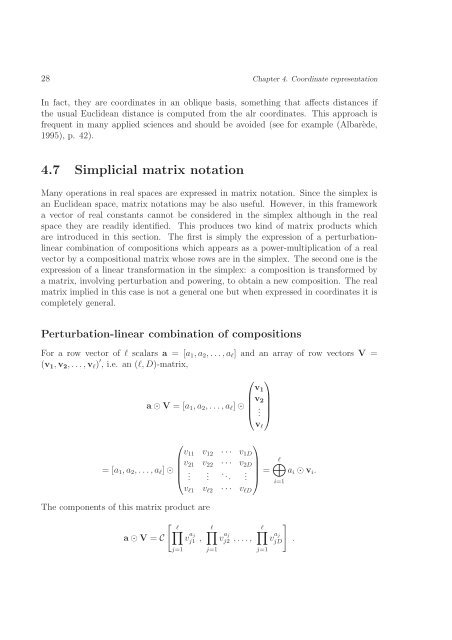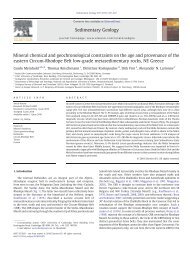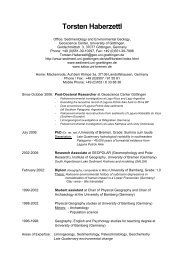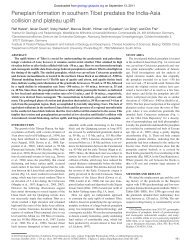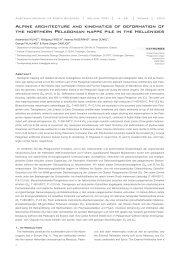Lecture Notes on Compositional Data Analysis - Sedimentology ...
Lecture Notes on Compositional Data Analysis - Sedimentology ...
Lecture Notes on Compositional Data Analysis - Sedimentology ...
Create successful ePaper yourself
Turn your PDF publications into a flip-book with our unique Google optimized e-Paper software.
28 Chapter 4. Coordinate representati<strong>on</strong><br />
In fact, they are coordinates in an oblique basis, something that affects distances if<br />
the usual Euclidean distance is computed from the alr coordinates. This approach is<br />
frequent in many applied sciences and should be avoided (see for example (Albarède,<br />
1995), p. 42).<br />
4.7 Simplicial matrix notati<strong>on</strong><br />
Many operati<strong>on</strong>s in real spaces are expressed in matrix notati<strong>on</strong>. Since the simplex is<br />
an Euclidean space, matrix notati<strong>on</strong>s may be also useful. However, in this framework<br />
a vector of real c<strong>on</strong>stants cannot be c<strong>on</strong>sidered in the simplex although in the real<br />
space they are readily identified. This produces two kind of matrix products which<br />
are introduced in this secti<strong>on</strong>. The first is simply the expressi<strong>on</strong> of a perturbati<strong>on</strong>linear<br />
combinati<strong>on</strong> of compositi<strong>on</strong>s which appears as a power-multiplicati<strong>on</strong> of a real<br />
vector by a compositi<strong>on</strong>al matrix whose rows are in the simplex. The sec<strong>on</strong>d <strong>on</strong>e is the<br />
expressi<strong>on</strong> of a linear transformati<strong>on</strong> in the simplex: a compositi<strong>on</strong> is transformed by<br />
a matrix, involving perturbati<strong>on</strong> and powering, to obtain a new compositi<strong>on</strong>. The real<br />
matrix implied in this case is not a general <strong>on</strong>e but when expressed in coordinates it is<br />
completely general.<br />
Perturbati<strong>on</strong>-linear combinati<strong>on</strong> of compositi<strong>on</strong>s<br />
For a row vector of l scalars a = [a 1 , a 2 , . . ., a l ] and an array of row vectors V =<br />
(v 1 ,v 2 , . . .,v l ) ′ , i.e. an (l, D)-matrix,<br />
⎛ ⎞<br />
v 1<br />
v 2<br />
a ⊙ V = [a 1 , a 2 , . . .,a l ] ⊙ ⎜ ⎟<br />
⎝ . ⎠<br />
v l<br />
⎛<br />
⎞<br />
v 11 v 12 · · · v 1D<br />
v 21 v 22 · · · v 2D<br />
l⊕<br />
= [a 1 , a 2 , . . .,a l ] ⊙ ⎜<br />
⎝<br />
.<br />
. . ..<br />
⎟ . ⎠ = a i ⊙ v i .<br />
i=1<br />
v l1 v l2 · · · v lD<br />
The comp<strong>on</strong>ents of this matrix product are<br />
a ⊙ V = C<br />
[ l∏<br />
j=1<br />
v a j<br />
j1 , l∏<br />
j=1<br />
v a j<br />
j2 , . . ., l∏<br />
j=1<br />
v a j<br />
jD<br />
]<br />
.


